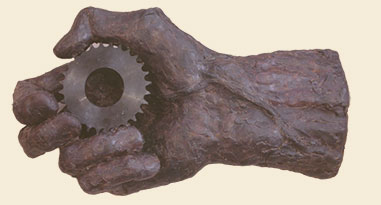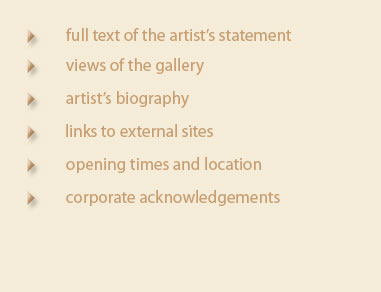 |
Magan
(an old English word meaning "to be able") ;
The roots of this project come from the writings of the Canadian writer, Joyce Nelson, who has re-established a vital link between culture and agriculture.
These words both stem from the same Latin root: colere , meaning "to care for". In the case of the word "agriculture", that caring is directly related towards the ager , meaning "field", while the word "culture" leaves the caring open-ended, implying an attitude towards living. For me, the hand is a visual metaphor, a physical manifestation of that caring, that concern, the need to address and rectify the current imbalance within our systems of food production.
To be able to say that there is another way, to be able to make it happen, to be able to find the will to change is what Magan attempts to prompt. We citizens and our governments must find sustainable solutions before the consequences of our ignorance and neglect become irreversible
Magan is a sitespecific installation with three elements. The first element is monumental images of hands on the gallery floor and the outside courtyard. The second element is seven pairs of classically modelled hands on plinths presented with four accompanying shelf works. Finally, there are painted renderings of symbolic hands on the exterior walls of the gallery.
Nelson, Joyce, Sign Crimes/Road Kill: From Mediascape to Landscape , Between the Lines Press, Toronto 1992 Culture and Agriculture: The Ultimate Simulacrum |
 |
 |





